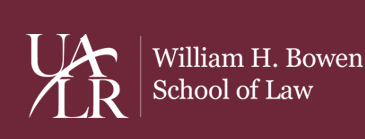Publication Date
2010
Abstract
Affirmative action, since its inception in 1961, has been under siege. The backlash against affirmative action began in earnest almost immediately following its origination through President John F. Kennedy’s and President Lyndon B. Johnson’s Executive Orders. Organized hostility in opposition to affirmative action crystallized early with “color-blind” theories posited and adopted, “reverse discrimination” alleged and embraced, and constitutional narrowing through adoption of white-privileged justifications. Enmity against affirmative action continues unabated today as exemplified by recent academic writings and studies purporting to prove that affirmative action positively injures African Americans and recent state-wide campaigns seeking to eradicate affirmative action through state constitutional amendments.
Further, a more subtle affront to affirmative action has emerged recently as dozens of commentators and millions of Americans now argue that, with the election of Barack Obama as president, the United States has officially entered a postracial era. Postracialism, in averring that the election of an African American president formally moves the nation past its racial problems, essentially maintains that affirmative action has run its course, is no longer necessary, and is a relic of a past that has been affirmatively overcome. Affirmative action, as a progressive doctrine aimed at diversifying our classrooms and country to the benefit of all and leveling the American playing field, appears to be fighting for survival.
Into this breach steps Professor Deirdre Bowen and her crucially important study Brilliant Disguise: An Empirical Analysis of a Social Experiment Banning Affirmative Action. In this article, detailing the results of her empirical study, Professor Bowen carefully analyzes the experiences of minority students currently attending U.S. undergraduate and graduate programs in the hard sciences. While her findings are disheartening (i.e., racism and discrimination continues at alarming rates in upper-level educational institutions), they are critical to understanding what must be done to ensure equality and social justice in the future. What is remarkable about Brilliant Disguise is that Professor Bowen asks the right questions and gathers the right information that allows her to provide the kind of empirical analysis that brings honesty and reality to the affirmative action debate.
For the past decade, as I have carefully followed, engaged in, and written about affirmative action, I have often and openly lamented that modern opponents of affirmative action are frequently dishonest and disingenuous in their opposition. The most outspoken critics of affirmative action have warily refused to ask meaningful questions and have continuously balked at opportunities to analyze consequential issues, data, and material that might serve to cast long shadows over their antagonistic positions. Anti-affirmative action adherents, from the beginning, have focused their attention on the wrong criteria in evaluating the doctrine’s potential and effectiveness, leading to wrong-headed arguments that serve to perpetuate white privilege and power.
Opponents of affirmative action routinely rely on several “go-to” arguments as justification for why the doctrine must be eliminated. For the most part, arguments such as stigma, color-blind constitutionalism, and mismatch have gone unchallenged from an empirical perspective, allowing oppositionists to use simple opinion to perpetuate their objections. But now, Brilliant Disguise provides valuable empirical data that can be used to evaluate the justifications most often posited for ending affirmative action. This data allows vital insights into race relations in the twenty-first century and the utility of affirmative action as an effective tool in the quest to achieve social justice in the United States. Professor Bowen’s findings are explosive, and in my mind, serve to undermine each of the primary backward-looking oppositionist arguments against affirmative action.
To that end, this Commentary will introduce and inspect three of the most popular arguments posited by affirmative action opponents: stigma, mismatch, and a combination of reverse discrimination and color-blind constitutionalism. Part I describes Justice Clarence Thomas’s stigma justification for eradicating affirmative action and then describes normative contentions that have been made in response. Part II explores Professor Richard Sander’s mismatch theory as a basis for eliminating affirmative action. And Part III examines Ward Connerly’s reverse discrimination and color-blind ideal justification for terminating affirmative action. Each Part then summarizes the critical findings of Brilliant Disguise and applies those findings to illustrate how Bowen’s new data undermines each oppositionist argument in insightful ways.
Document Type
Article
Recommended Citation
andré douglas pond cummings, The Associated Dangers of "Brilliant Disguises," Color-Blind Constitutionalism, and Postracial Rhetoric, 85 Ind. L.J. 1277 (2010).
Available at: https://lawrepository.ualr.edu/faculty_scholarship/235
